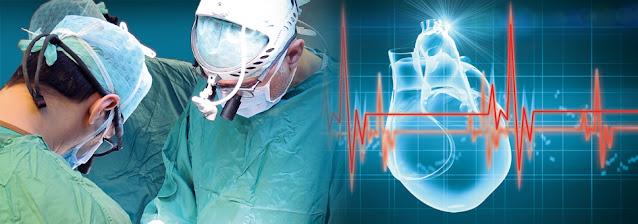What are the different Heart treatment options and how they are done?
You may have already had some procedures to assist you survive your heart attack and identify your condition if you've had a heart attack. Many heart attack victims, for example, have had thrombolysis, a technique that involves injecting a clot-dissolving chemical into a coronary artery to restore blood flow.
Within a few hours of a heart attack,
experts suggest to perform an operation. To increase blood supply to the heart
muscle, many will need coronary angioplasty or coronary artery bypass surgery,
says Dr.
Ranjit Jagtap.
Aditi Jagtap, Dr Ranjit
Jagtap Daughter, also joins her father in his philanthropic effort in
order to continue rewarding society in such a way that it desires by expanding
the beneficial urges.
Heart
Procedures and surgeries
- Angioplasty
Surgeons connect deflated balloon and
special tubing to the coronary arteries with a thread. Then this same balloon
is inflated to open up blocked places. Frequently used in conjunction with the
placement of a stent to assist prop the artery open and reduce the risk of
future blockage. It's possible that you'll need to spend the night in the
hospital.
The
Purpose of the Procedure
- Increases blood flow through the
occluded artery significantly.
- Reduces the severity of chest pain
(angina).
- Increases physical activity
abilities in people whose angina or ischemia hamper.
- To open arteries in the neck and
brain to help avoid strokes.
 |
2. Artificial heart
valve surgery
This treatment is also known as heart
valve replacement surgery. In this treatment, a healthy heart valve is used to
replace a defective or sick heart valve.
The
Purpose of the Procedure
In this treatment they restore function
of the heart valves.
3.
Atherectomy
The catheter contains a spinning shaver
on its tip to cut away plaque from the artery, similar to angioplasty.
The
Purpose of the Procedure
By eliminating plaque accumulation from
the occluded artery, it improves blood flow.
It can also be used to eliminate plaque
from the carotid arteries (the major arteries in the neck that lead to the
brain) and minimize the risk of stroke.
4.
Bypass surgery
Treats blocked heart arteries by
grafting arteries or veins from other regions of the body to reroute blood flow
around the stopped artery and supply blood flow to the heart muscle. See a
blood flow animation. Moreover, it depends on how many coronary arteries are
constricted.
The
Purpose of the Procedure
- One of the most popular and
efficient ways to treat a blood vessel blockage in the heart muscle.
- Increases the amount of blood and
oxygen delivered to the heart.
- To relieve pain in the chest.
- Reduces the chance of getting
heart stroke.
- Improves physical activity ability
that angina or ischemia hamper.
5.
Cardiomyoplasty
It is an experimental operation that
involves the removal of skeletal muscles from a patient's back or abdomen. They
then wrap it around a sick heart. This extra muscle, along with continuous
stimulation from a device akin to a pacemaker, may help the heart pump more
efficiently.
The
Purpose of the Procedure
It Increases the heart's pumping
motion.
6.
Heart transplant
In this treatment they remove and
replace heart with a healthy human heart. Organ donation uses those
hearts.
The Purpose of the
Procedure
- Recognized as a tried-and-true treatment
for restoring heart health in carefully chosen patients.
7.
Minimally invasive
heart surgery
It is an invasive alternative to
traditional bypass surgery. In the chest, there are small incisions. Surgeon
connects heart through bypass the obstruct coronary artery or arteries, chest
arteries or veins from your leg instruments passes through the ports in bypass.
Rather than seeing the operations directly, the surgeon watches them on
television monitors.
Finally, halting and pumping of blood
through an oxygenator, sometimes known as a "heart-lung" machine, in
PACAB takes place. This procedure takes place while the heart is still beating.
The patient needs to stay for several days while being in the hospital.
The Purpose of the
Procedure
- Manages blockages in the heart's
blood flow and enhances the heart's blood and oxygen supply.
- Relieves pain in the chest.
- Enhances the ability to engage in
physical exercises.
According to Aditi
Jagtap Pune, it is critical for people with cardiovascular disease to
isolate from people who have COVID-19 adverse effects and to be up to date on
flu and pneumonia vaccinations. She also understands the difficulties that a
patient and his family face through traumatic surgery.



Orthopedic Implants Manufacturer
ReplyDelete